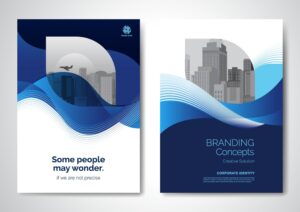Creating Impactful Infographic Designs: A Guide
Introduction
Infographics have become a powerful tool for conveying complex information in a visually appealing and easily digestible format. Whether you’re trying to present data, share a process, or tell a story, infographics can help you engage your audience and make your content more memorable. In this guide, we’ll explore the key elements of creating impactful infographic designs and provide tips to ensure your infographics are both informative and eye-catching.
Understanding the Purpose of Your Infographic
1. Define Your Goals
Before you start designing, it’s essential to define the purpose of your infographic. Are you trying to educate your audience, promote a product, or share research findings? Understanding your goals will help guide the design process and ensure that your infographic effectively communicates the intended message.
2. Know Your Audience
Knowing your audience is crucial in creating a design that resonates. Consider their interests, preferences, and what they hope to gain from your infographic. Tailoring your design to your audience will make your content more relevant and engaging.
Key Elements of Impactful Infographic Designs
1. Simplicity is Key
While it’s tempting to include as much information as possible, simplicity is vital in infographic design. Focus on the most critical data and present it in a clear and concise manner. Avoid clutter and unnecessary details that could overwhelm your audience.
2. Use Visual Hierarchy
Visual hierarchy refers to the arrangement of elements in a way that guides the viewer’s eye through the information. Start with the most important data at the top and use size, color, and placement to emphasize key points. This helps ensure that your audience can quickly understand the main message of your infographic.
3. Choose the Right Color Palette
Colors play a significant role in the effectiveness of your infographic. Choose a color palette that reflects your brand and enhances readability. Use contrasting colors to highlight important data and ensure that the overall design is visually appealing. Be mindful of color psychology, as certain colors can evoke specific emotions and reactions.
4. Incorporate Engaging Visuals
Visuals such as icons, illustrations, and charts are essential in making your infographic more engaging. These elements help break up text, illustrate points, and make data more understandable. Use visuals that are relevant to your content and avoid overloading the infographic with too many images, which can distract from the main message.

5. Make Data Digestible
Infographics are often used to present data, so it’s important to make this data easy to digest. Use charts, graphs, and other visual aids to present statistics and figures in a way that’s both visually appealing and easy to understand. Label your data clearly and provide context where necessary to avoid confusion.
6. Optimize for Sharing
One of the main advantages of infographics is their shareability. To maximize the reach of your infographic, make sure it’s optimized for sharing on social media and other platforms. Use a vertical layout for better compatibility with social media feeds, and include your logo and website URL to drive traffic back to your site.
Best Practices for Infographic Design
1. Keep Text Minimal
Infographics should be visually driven, so keep text to a minimum. Use short, concise sentences or bullet points to convey information, and let the visuals do the heavy lifting. Remember, the goal is to make the content easy to digest at a glance.
2. Ensure Accuracy
Accuracy is crucial in infographic design, especially when presenting data. Double-check your statistics and sources to ensure that all information is correct. Inaccurate data can damage your credibility and undermine the effectiveness of your infographic.
3. Test Readability
Before finalizing your infographic, test its readability. Show it to someone unfamiliar with the content and see if they can understand the message quickly and easily. If they struggle to grasp the key points, consider simplifying the design or breaking it into multiple infographics.
Conclusion
Creating impactful infographic designs requires a balance of creativity, clarity, and strategy. By focusing on simplicity, using a strong visual hierarchy, and optimizing for shareability, you can design infographics that not only engage your audience but also effectively convey your message.
Ready to create compelling infographics for your business? Contact us to get started.
For further reading, consider exploring Smashing Magazine for design tips and trends, or visit AIGA for professional design resources and insights.
Explore more related articles to deepen your understanding and make informed choices about graphic design techniques
Why Custom Website Development is Essential for Your Brand
How to Choose the Best Graphic Design Services for Your Business







